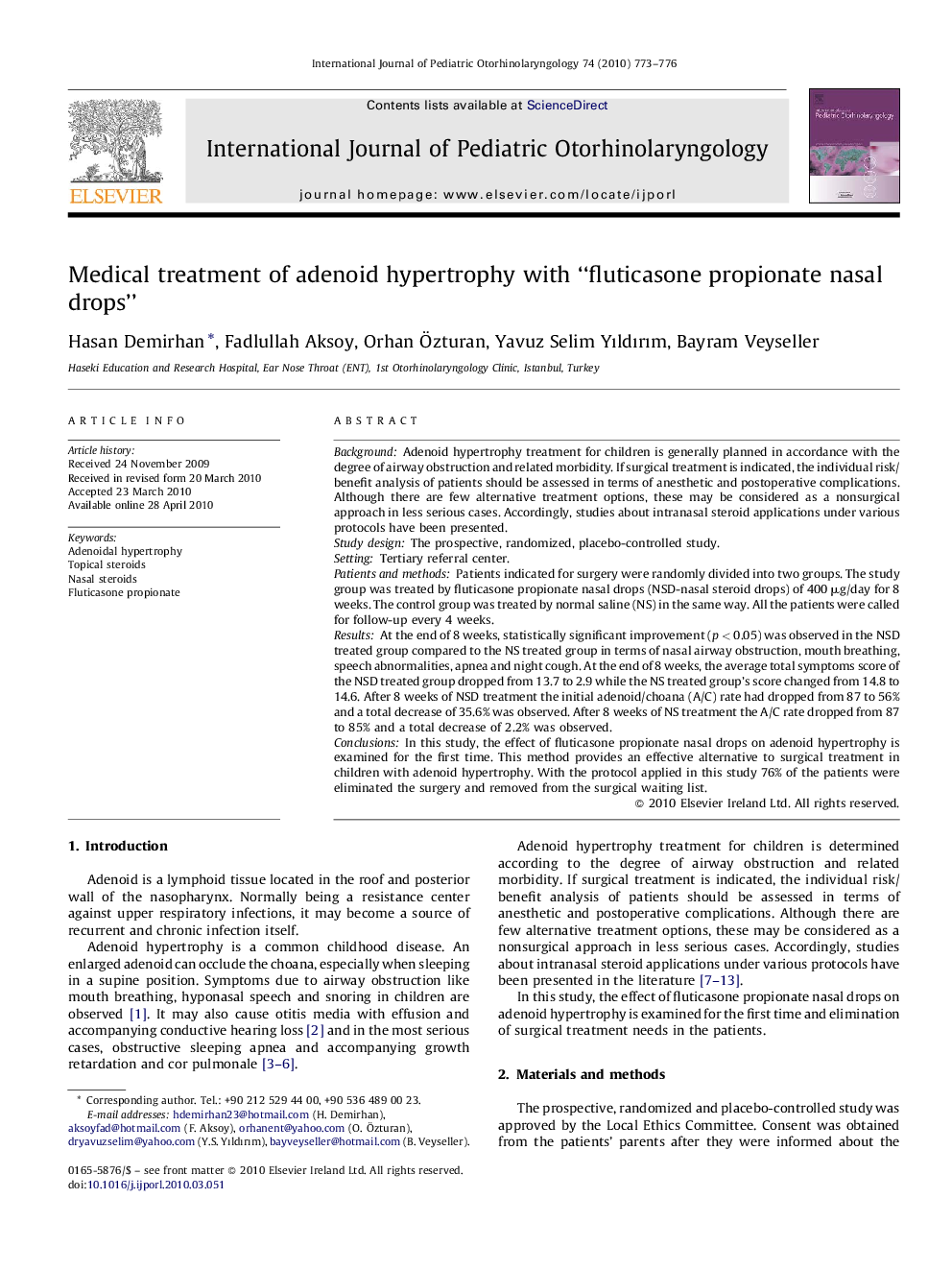| Article ID | Journal | Published Year | Pages | File Type |
|---|---|---|---|---|
| 4112848 | International Journal of Pediatric Otorhinolaryngology | 2010 | 4 Pages |
BackgroundAdenoid hypertrophy treatment for children is generally planned in accordance with the degree of airway obstruction and related morbidity. If surgical treatment is indicated, the individual risk/benefit analysis of patients should be assessed in terms of anesthetic and postoperative complications. Although there are few alternative treatment options, these may be considered as a nonsurgical approach in less serious cases. Accordingly, studies about intranasal steroid applications under various protocols have been presented.Study designThe prospective, randomized, placebo-controlled study.SettingTertiary referral center.Patients and methodsPatients indicated for surgery were randomly divided into two groups. The study group was treated by fluticasone propionate nasal drops (NSD-nasal steroid drops) of 400 μg/day for 8 weeks. The control group was treated by normal saline (NS) in the same way. All the patients were called for follow-up every 4 weeks.ResultsAt the end of 8 weeks, statistically significant improvement (p < 0.05) was observed in the NSD treated group compared to the NS treated group in terms of nasal airway obstruction, mouth breathing, speech abnormalities, apnea and night cough. At the end of 8 weeks, the average total symptoms score of the NSD treated group dropped from 13.7 to 2.9 while the NS treated group's score changed from 14.8 to 14.6. After 8 weeks of NSD treatment the initial adenoid/choana (A/C) rate had dropped from 87 to 56% and a total decrease of 35.6% was observed. After 8 weeks of NS treatment the A/C rate dropped from 87 to 85% and a total decrease of 2.2% was observed.ConclusionsIn this study, the effect of fluticasone propionate nasal drops on adenoid hypertrophy is examined for the first time. This method provides an effective alternative to surgical treatment in children with adenoid hypertrophy. With the protocol applied in this study 76% of the patients were eliminated the surgery and removed from the surgical waiting list.
